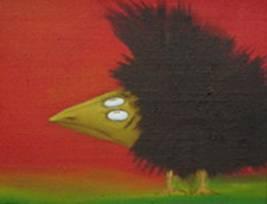Yasir Arafat fell ill and died as I was completing this novel. Had he chosen the path of peace instead of unleashing a wave of terror, it would have never been written, and thousands of people, Israeli and Palestinian, would still be alive today.
THIS NOVEL, LIKE THE PREVIOUS FOUR BOOKS IN the Gabriel Allon series, could not have been written without the assistance of David Bull. David truly is among the finest art restorers in the world, and his friendship and wisdom have enriched both my life and my work. Jeffrey Goldberg, the brilliant correspondent of The New Yorker, generously shared with me his wealth of knowledge and experience and was kind enough to read my manuscript and offer several helpful suggestions. Aviva Raz Schechter of the Israeli embassy in Washington provided me with a unique window on Israel in a turbulent time. Louis Toscano twice read my manuscript, and it was made better by his sure editorial hand. My friend and literary agent, Esther Newberg of International Creative Management, read each of my early drafts and quietly pointed me in the right direction.
I consulted hundreds of books, articles, and Web sites while preparing this manuscript, far too many to cite here, but I would be remiss if I did not mention a few. I am deeply indebted to the great Israeli scholar Benny Morris, whose groundbreaking The Birth of the Palestinian Refugee Problem helped to shape my views on the nature and scope of the Arab expulsions that took place in 1947 and 1948. Morris’s towering history of the Arab-Israeli conflict, Righteous Victims, also proved to be an invaluable resource, as was Martin Gilbert’s Israel . My own impressions of contemporary Israeli society were sharpened by three works in particular: The Israelis by Donna Rosenthal, Still Life with Bombers by David Horowitz, and War Without End by Anton La Guardia. The Quest for the Red Prince by Michael Bar-Zohar and Eitan Haber is a telling account of the Salameh family’s violent history. It was Yaron Ezrahi of the Israeli Democracy Institute in Jerusalem, not the fictitious Colonel Yonatan Shamron, who first compared the Separation Fence to the Wailing Wall, and with far more eloquence and passion than I managed here. Those familiar with the Yom Kippur evening service will recognize that I have borrowed four lines of prayer, composed originally for the British edition of Gates of Repentance, and placed them in the mouth of Ari Shamron in the penultimate chapter
None of this would be possible without the support and dedication of the remarkable team of professionals at Putnam: Carole Baron, Daniel Harvey, Marilyn Ducksworth, and especially my editor, Neil Nyren. They are, quite simply, the very best at what they do.
Finally, my wife, Jamie Gangel, skillfully read each of my early drafts, served as a sounding board for my ideas, and, as always, helped drag me across the finish line. I cannot overstate her contribution, nor can I thank her enough.
*** 


